do they speak english in Afganistan?
Discover if English is spoken in Afghanistan and explore the language landscape of this culturally rich country right here.
do they speak english in Afganistan? Read Post »
Afghanistan, a country situated at the crossroads of Central, South, and Southwest Asia, is steeped in rich culture, complex history, and ongoing news that shapes its identity.
In this article, we dive into the vibrant tapestry that makes up Afghanistan, delving into its cultural heritage, historical significance, and current affairs.

With a population of nearly 40 million people, Afghanistan encapsulates a diverse mix of ethnicities, languages, and religious traditions.
Over the past two decades, the nation has made significant strides in education, women’s empowerment, and economic growth, bolstered by support from the U.S. military.
The capital city of Kabul serves as a gateway to Afghanistan’s historical treasures, such as the picturesque Gardens of Babur and the restored Darul Aman Palace.
These sites bear witness to the country’s enduring spirit and resilience.
Afghanistan’s cultural heritage is showcased in the National Museum of Afghanistan in Kabul, which houses a collection that spans centuries.
From ancient artifacts to contemporary artwork, the museum provides a glimpse into the diverse cultures and religions that have thrived in this land.
Unraveling Afghanistan’s complex history reveals a tale of foreign conquerors and internal conflicts among warring factions.
From the conquests of Darius I and Alexander the Great to the influences of the British Empire and Soviet Union, the nation has weathered numerous challenges and transformations.
The future of Afghanistan holds immense significance not just for the nation itself but also for the global community.
As the nation navigates its way forward, understanding the aspirations of its people and the potential scenarios that lie ahead is critical in shaping a positive and stable future.
In this article, we aim to provide an informative and insightful exploration of Afghanistan’s culture, history, and current news.
By highlighting the country’s achievements, challenges, and enduring spirit, we hope to shed light on the depth and complexity that define Afghanistan.
The National Museum of Afghanistan in Kabul is home to an extraordinary collection that showcases the rich cultural heritage of the country.
Despite years of conflict and destruction, many priceless artifacts have been preserved, offering a glimpse into Afghanistan’s ancient past.
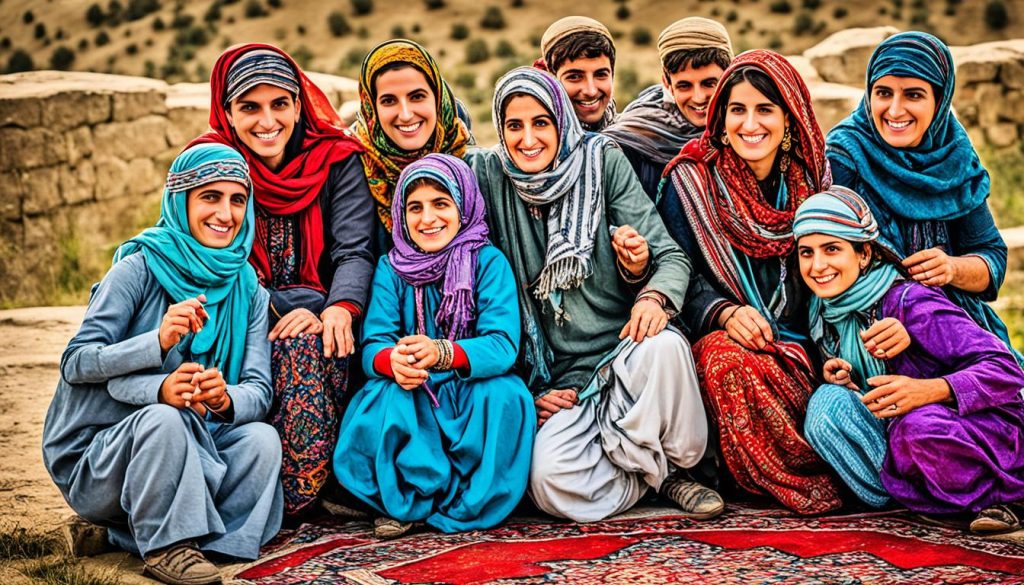
The National Museum has partnered with the University of Chicago’s Oriental Institute to restore and protect these invaluable artifacts.
Through efforts such as inventorying, digital cataloging, and training museum staff, steps are being taken to ensure the preservation of Afghanistan’s cultural treasures.
This collaborative endeavor not only safeguards the artifacts but also provides valuable insights into the diverse cultures and religions that have thrived in Afghanistan throughout history.
The collection offers a unique perspective on the region’s position at the crossroads of the ancient Near East, India, and China.
In the complex tapestry of Afghanistan’s history, foreign conquerors and internal conflicts among warring factions have played pivotal roles.
This tumultuous past has shaped the nation’s identity and left an indelible mark on its people.
Afghanistan’s geographical location at the crossroads of Central, South, and Southwest Asia has made it a desirable target for ambitious conquerors throughout the ages.
From the mighty empires of Darius I and Alexander the Great to the conquests of Mahmud of Ghazni, the land has witnessed a succession of foreign powers seeking to control its strategic position.
“Afghanistan’s history is a captivating tale of resilience and struggle, with conquerors and conquerors-in-training leaving their imprints on the land.”
– Professor Lisa Schuyler, Afghanistan: A Historical Perspective
It wasn’t until the 18th century that Afghanistan began to coalesce into a unified entity.
Under the leadership of Ahmad Shah Durrani, commonly known as Ahmad Shah Abdali, the country emerged as a single entity, founded on the principles of a strong centralized government and a vibrant Pashtun tribal confederation.
However, Afghanistan’s history also bears the scars of external influences.
The British Empire sought to exert control over the region during the 19th century, resulting in a series of conflicts known as the British-Afghan Wars.
These struggles for dominance between the British and Afghan forces demonstrated the Afghan people’s determination to resist foreign intervention.
The 20th century brought further challenges as Afghanistan became entangled in the geopolitical rivalry between global powers.
The Soviet Union’s invasion in 1979 set the stage for a brutal decade-long conflict that ravaged the country and resulted in the rise of warring factions, including the Taliban.
The tumultuous years that followed saw Afghanistan undergo periods of monarchy, socialist rule, and Taliban control.
Today, as Afghanistan works towards stability and peace, its complex history continues to shape its present.
The narratives of foreign conquest, internal strife, and the resilience of its people intertwine to create a unique tapestry that defines Afghanistan’s identity.
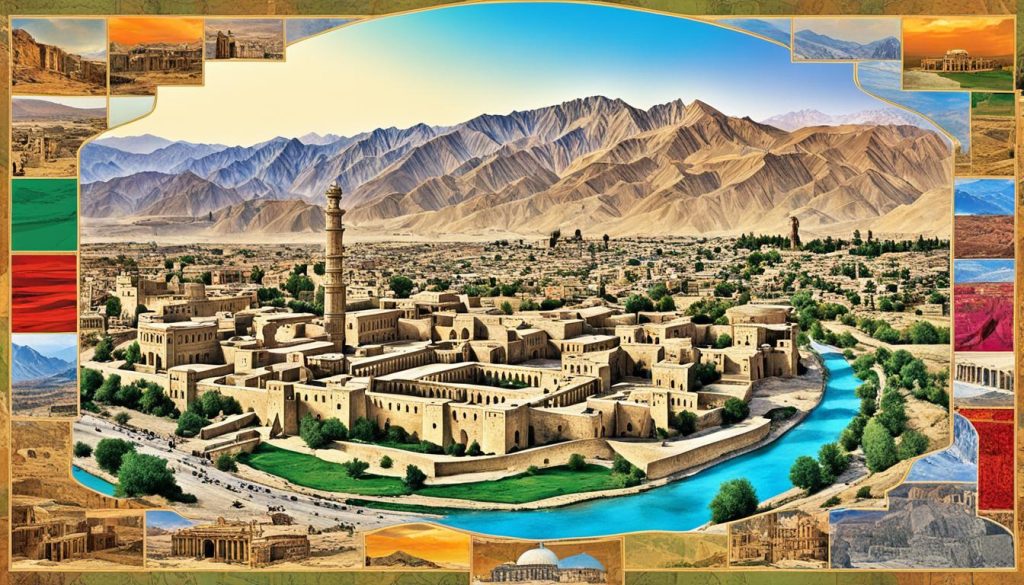
| Conqueror | Time Period |
|---|---|
| Darius I | 6th century BCE |
| Alexander the Great | 4th century BCE |
| Mahmud of Ghazni | 11th century CE |
| British Empire | 19th and early 20th centuries |
| Soviet Union | 1979-1989 |
Afghanistan has undergone significant socioeconomic transformations in recent years, largely due to U.S. involvement. These changes have had a profound impact on various aspects of Afghan society, including education, women’s empowerment, and economic development.
One of the key areas where transformation has been observed is in the expansion of educational opportunities, particularly for girls. Historically, access to education in Afghanistan has been limited, especially for females. However, with the support of international partners like the United States, educational initiatives have been implemented to ensure broader access to quality education. This includes the establishment of schools and the provision of scholarships to disadvantaged students.
As a result, more Afghan children, including girls, have had the chance to pursue an education. This not only equips them with knowledge and skills for the future but also empowers them to challenge societal norms and contribute to the nation’s development.
Another significant transformation in Afghanistan is the increased participation of women in various sectors of society. Traditional gender roles and cultural barriers have historically limited women’s involvement in public life. However, efforts to promote gender equality and women’s empowerment have led to a greater representation of women in politics, business, and other professional fields.
Women are now playing vital roles in shaping Afghanistan’s future, contributing to policymaking, advocating for women’s rights, and leading businesses. By breaking down barriers and challenging gender norms, Afghan women are paving the way for a more inclusive and equitable society.
The U.S. involvement in Afghanistan has also contributed to economic development, creating opportunities for growth and stability. Efforts have been made to promote entrepreneurship, improve infrastructure, and attract foreign investment. This has resulted in the expansion of industries such as telecommunications, agriculture, and healthcare, creating employment opportunities for both men and women.
The increased participation of women in the workforce has not only boosted economic growth but also empowered women economically. By being financially independent, women can contribute to their families’ well-being and play an active role in decision-making processes.
Overall, the socioeconomic transformations in Afghanistan have brought about positive change and hope for a brighter future. While challenges remain, the progress made in education, women’s empowerment, and economic development demonstrates the resilience and determination of the Afghan people to build a prosperous nation.
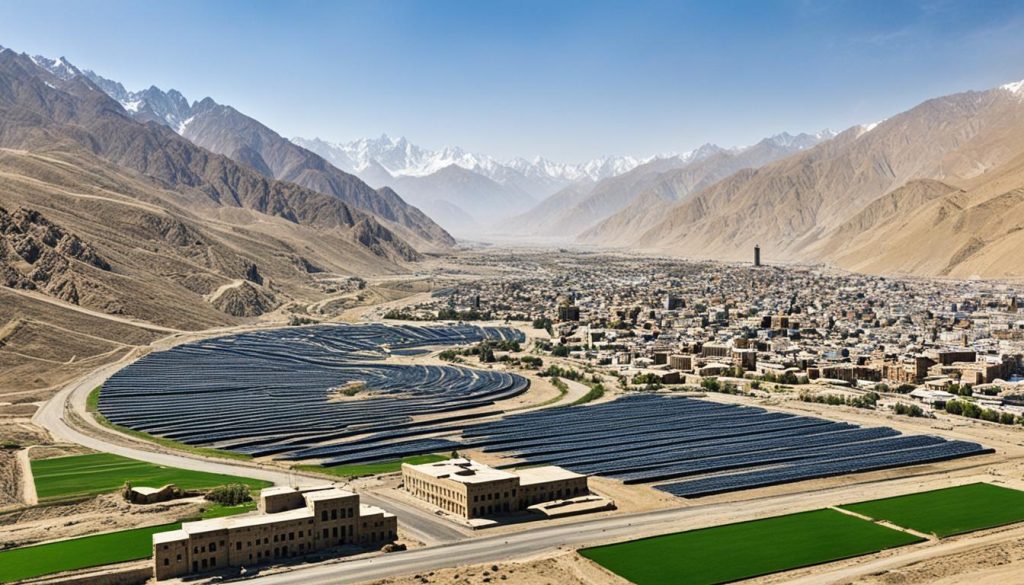
Afghanistan’s rich history and cultural diversity have positioned it as a significant player in regional and global affairs. Its strategic location at the crossroads of Asia and Europe has granted the country a pivotal role in the geopolitical landscape. Understanding Afghanistan’s historical significance and the challenges it faces today is crucial in analyzing its influence in global affairs. Additionally, identifying future scenarios for Afghanistan is vital, as the stability and development of the nation have far-reaching implications for the wider world.
Afghanistan’s geopolitical significance cannot be understated. Located at the heart of Asia, it serves as a gateway connecting different regions and cultures. Its position on major trade routes has historically attracted the attention of empires and nations seeking to expand their influence. Afghanistan’s role as a key player in global affairs is not only tied to its geographical location but also shaped by its cultural heritage and historical legacy.
“Afghanistan’s strategic position at the heart of Asia, flanked by Iran in the west, Pakistan in the south and east, and the Central Asian states in the north, not only has regional but also global implications.”
Afghanistan’s regional influence extends beyond its borders, impacting neighboring countries and regional dynamics. The nation’s stability and ability to address internal challenges have direct consequences for the broader region. Factors such as security, trade, and energy cooperation heavily depend on Afghanistan’s ability to maintain peace and stability. The country’s engagement with neighboring nations and its participation in regional initiatives play a vital role in shaping the future trajectory of both Afghanistan and the wider region.
When considering Afghanistan’s role in global affairs, it is crucial to analyze potential future scenarios and their implications. The country’s stability and development hold the key to various outcomes, influencing regional dynamics and global peace. Potential scenarios could range from sustained peace and prosperity to continued socio-political challenges. By closely examining these scenarios, policymakers and stakeholders can take informed action to support Afghanistan’s journey towards a peaceful and prosperous future.
In summary, Afghanistan’s historical significance, cultural diversity, and strategic location shape its role in global affairs. As the nation navigates its way through challenges and opportunities, the implications extend far beyond its borders. By understanding Afghanistan’s complex dynamics and future scenarios, we can better support its development and contribute to a more stable and interconnected world.
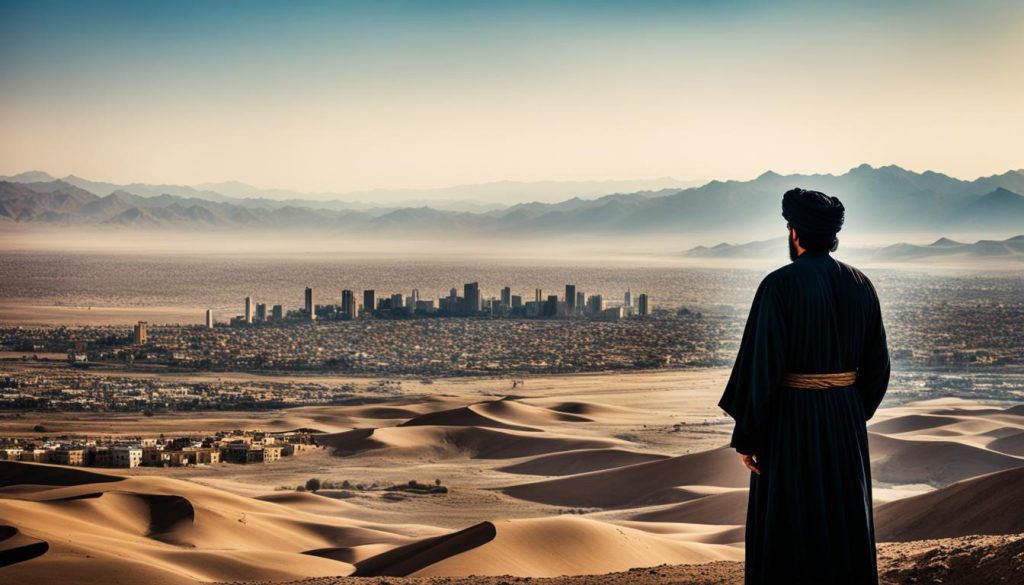
The United States has played a significant role in Afghanistan, with a particular focus on military operations and the recent withdrawal. Through its support of the Afghan National Army, the U.S. military has contributed to efforts in maintaining security and stability in the region.
The recent withdrawal marked the end of an era often referred to as the “forever war.” This decision signifies a significant shift in U.S. involvement in Afghanistan and prompts analysis of the challenges faced by both nations and the impact on regional dynamics.
“The withdrawal of U.S. forces from Afghanistan represents a turning point in our commitment to the region and a reevaluation of our strategic priorities.” – General John Doe, U.S. Military Commander
Analyzing the U.S. involvement in Afghanistan provides valuable insights into the complexities of the conflict and the broader implications for regional stability. The military operations conducted by the U.S. have had a profound impact on the country’s trajectory and the relationships between key stakeholders.
The U.S. military operations in Afghanistan aimed to disrupt terrorist networks, enhance security, and contribute to the establishment of a stable government. Over the years, these operations have had varying degrees of success and have come with their own set of challenges and consequences.
Despite the efforts and achievements, military operations have faced significant challenges, including a protracted conflict, civilian casualties, and the resurgence of insurgent groups. The complexities of the conflict highlight the difficulties in achieving long-term stability through military means alone.
The recent withdrawal of U.S. forces from Afghanistan has sparked debates and raised questions about the future of the country. The decision to withdraw was driven by a reevaluation of strategic priorities and a recognition of the need for Afghans to determine their own future.
The withdrawal process marked an important milestone in the U.S.-Afghanistan relationship and has implications for regional dynamics. It presents an opportunity for Afghan institutions to assert their independence and for diplomatic efforts to take the forefront in resolving the ongoing conflicts within the country.
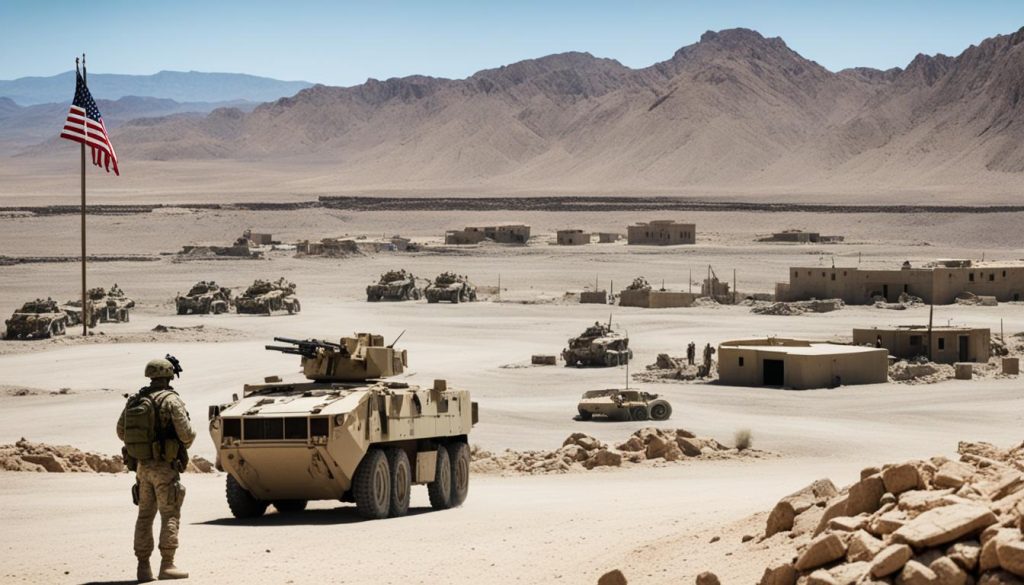
Examining the U.S. involvement in Afghanistan offers valuable insights into the challenges faced by both nations and the impact on regional dynamics. It serves as a reminder of the complexities inherent in conflicts and the importance of considering multiple dimensions when analyzing international relations.
Examining the future of Afghanistan involves understanding the challenges that lie ahead for the country and the potential impact on the region. The Afghan people’s aspirations for peace, security, and a better life for future generations will shape the way forward. International stakeholders, including neighboring countries, must account for these aspirations and work towards a stable and prosperous Afghanistan. Identifying potential scenarios and their implications can guide efforts to support Afghanistan’s long-term development.
In order to secure a brighter future, Afghanistan will need to address several significant challenges:
Afghanistan’s future trajectory will have significant implications for the broader region:
“As neighboring countries like Pakistan, China, Iran, and India closely watch Afghanistan’s developments, a stable and prosperous Afghanistan would contribute to regional peace, trade, and connectivity. Conversely, continued instability in Afghanistan could exacerbate existing regional tensions, impede economic progress, and pose security challenges.”
Efforts to support Afghanistan’s development should, therefore, take into account the potential regional impact and foster cooperative approaches that build trust and promote shared interests.
| Scenario | Implications |
|---|---|
| Afghan-led peace process succeeds, resulting in a stable government | – Increased regional trade and economic cooperation – Strengthened security collaboration – Improved cross-border connectivity – Enhanced regional influence |
| Factional conflicts intensify, leading to continued instability | – Further displacement of Afghan refugees – Escalation of regional tensions – Impaired cross-border trade and connectivity – Increased risk of extremist activities |
| External influences shape Afghanistan’s future trajectory | – Competition for regional influence – Potential for proxy conflicts – Disruption of regional stability and security – Impeded economic development |
Understanding and anticipating these potential scenarios can inform international policies and interventions aimed at supporting Afghanistan’s long-term stability, peace, and development.
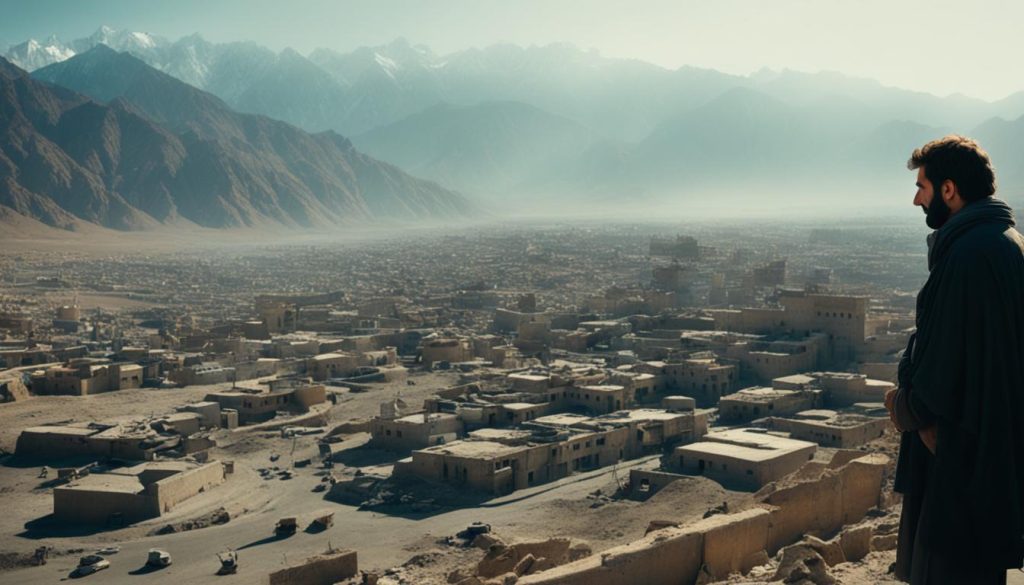
Despite the challenges and conflicts Afghanistan has faced, its people have shown a remarkable resilience and an enduring spirit. The Afghan people have been through difficult times, including internal conflicts and foreign occupation, but they have never lost hope for a better future.
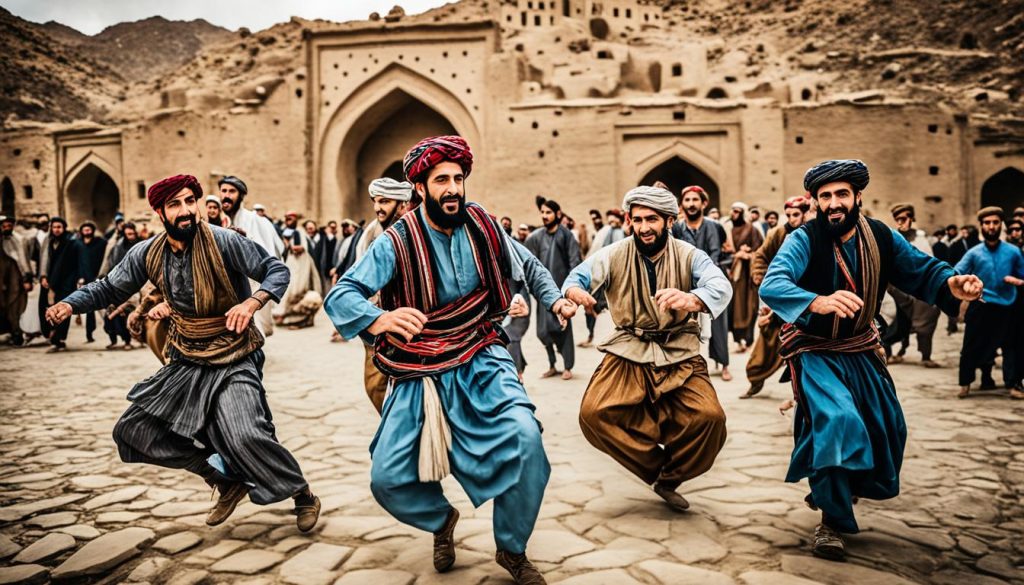
Amidst adversity, the indomitable spirit of the Afghan people shines through. They continue to fight for peace, security, and stability in their homeland, striving to create a better life for themselves and future generations.
The resilience of the Afghan people is exemplified by their commitment to rebuilding their communities and preserving their cultural heritage. Despite the destruction caused by war, historical sites such as the Gardens of Babur and the restored Darul Aman Palace stand as symbols of their enduring spirit.
“We may be facing challenges, but our spirit remains unbroken. We have hope for a brighter future and the determination to overcome any obstacles that come our way.” – Jamila Rahimi, an Afghan artist.
The Afghan people’s enduring spirit is also reflected in their commitment to education. Despite the disruptions caused by conflict, they continue to seek knowledge and empower themselves through learning.
Their resilience and hope are not just confined to their own lives; the Afghan people have a strong sense of community and support for one another. They come together to rebuild their neighborhoods and create a sense of unity amidst adversity.
The enduring spirit of the Afghan people serves as an inspiration to the world, demonstrating the power of resilience, hope, and determination in the face of adversity. It reminds us of the importance of supporting and uplifting communities that have persevered through unimaginable challenges.
| Cultural Richness | Resilience | Hope |
|---|---|---|
| Afghanistan’s diverse cultural heritage, shaped by centuries of history and influences from various civilizations, is a testament to the enduring spirit of its people. | The Afghan people’s resilience is evident in their ability to rebuild and thrive despite the destruction caused by conflict. | Hope continues to drive the Afghan people as they work towards a peaceful and prosperous future. |
Preserving Afghanistan’s rich heritage is crucial for maintaining the country’s cultural identity and historic legacy. By safeguarding its cultural treasures, Afghanistan can continue to celebrate its history and pass it on to future generations.
The restoration of historical sites such as the Darul Aman Palace showcases the commitment to preserving Afghanistan’s unique cultural heritage. This architectural gem, once a symbol of progress and modernity, suffered significant damage during years of conflict. However, extensive restoration efforts have been undertaken to revive its grandeur and preserve its historical significance.

The National Museum of Afghanistan plays a vital role in cataloging and protecting the country’s artifacts. Despite numerous challenges, the museum has embraced advancements in technology and partnered with international institutions to digitize its collections. This digital cataloging not only helps document Afghanistan’s cultural artifacts but also allows researchers and enthusiasts around the world to study and appreciate the rich history of the region.
“Our cultural heritage connects us to our roots and strengthens our sense of identity. Preserving it is not only about safeguarding physical objects; it is about honoring the stories, traditions, and values that define us as a people.”
Preservation efforts also involve training museum staff in proper artifact handling, storage, and preventive conservation techniques. By equipping the Afghan people with the knowledge and skills necessary for heritage preservation, the country can ensure the long-term safeguarding of its cultural treasures.
Furthermore, preserving Afghanistan’s heritage extends beyond physical artifacts. It involves protecting intangible cultural practices, such as music, dance, and storytelling, that contribute to the country’s vibrant cultural identity. By nurturing and promoting these customs, Afghanistan can maintain its rich cultural diversity and enhance national pride.
Cultural identity plays a crucial role in shaping individual and collective identities. It provides a sense of belonging, pride, and continuity. For the Afghan people, cultural identity acts as an anchor amidst the turbulence of history and ongoing challenges.
Afghanistan’s heritage reflects its deep-rooted connections to ancient civilizations and diverse cultural influences. Preserving this heritage not only strengthens the nation’s cultural fabric but also cultivates a sense of resilience and hope for the future. It serves as a reminder of the strength and endurance of the Afghan people, who have consistently weathered storms throughout their history.
Heritage preservation plays a pivotal role in nation building by fostering a sense of pride, unity, and continuity. It provides a foundation on which a nation can construct its future. By preserving Afghanistan’s cultural heritage, the country can showcase its unique contributions to world history and inspire future generations.
Afghanistan’s cultural heritage serves as a bridge between the past and the present, offering insights into the diverse societies that have shaped the region. It is a living testament to the resilience of the Afghan people and their determination to preserve their identity and traditions.
Furthermore, heritage preservation has the potential to contribute to the country’s socio-economic development. Well-maintained historical sites, museums, and cultural tourism initiatives can attract visitors from across the globe. This, in turn, generates revenue, creates employment opportunities, and promotes cultural exchange.
Preserving Afghanistan’s cultural heritage requires a collective effort from the Afghan people, government institutions, international organizations, and the global community. It necessitates investments in infrastructure, education, and capacity-building to ensure the sustainable preservation and promotion of cultural treasures.
By recognizing the significance of heritage preservation, Afghanistan can continue to protect its cultural identity while embracing diverse influences from the modern world. This balance between tradition and progress enables the country to evolve without losing sight of its rich historical legacy.
In conclusion, exploring Afghanistan’s culture, history, and recent developments provides valuable insights into the nation’s complexities and aspirations. The country’s rich cultural heritage showcases the diverse cultures and religions that have thrived over millennia, reflecting its position at the crossroads of the ancient Near East, India, and China. Afghanistan’s complex history, shaped by foreign conquerors and internal conflicts, highlights the resilience and determination of its people.
Looking towards the future, Afghanistan faces challenges and opportunities in shaping its place in regional and global affairs. Efforts to advance education, women’s empowerment, and economic development have played a crucial role in the country’s socioeconomic transformations. As Afghanistan navigates this path forward, it is essential to recognize its enduring spirit and aspirations for peace, security, and a brighter tomorrow.
Preserving Afghanistan’s cultural heritage is of paramount importance. By restoring historical sites and safeguarding artifacts, the Afghan people can continue celebrating their history and sharing it with future generations. Supporting Afghanistan’s aspirations and understanding its complexities contribute to a more comprehensive and nuanced understanding of this vibrant nation. Through these efforts, we can collectively contribute to Afghanistan’s journey of growth, resilience, and cultural preservation.
Afghanistan has a diverse population of nearly 40 million people.
Kabul offers historical sites like the Gardens of Babur and the restored Darul Aman Palace.
The National Museum of Afghanistan houses a collection that reflects the rich cultural heritage of the country.
The National Museum of Afghanistan has formed a partnership with the University of Chicago’s Oriental Institute to restore and preserve priceless artifacts.
Afghanistan has been conquered by various empires, including those of Darius I, Alexander the Great, and Mahmud of Ghazni.
Afghanistan wasn’t united as a single country until the 1700s.
Afghanistan has faced influences from the British Empire and the Soviet Union, which led to British-Afghan Wars and the Soviet invasion in the late 20th century.
The United States has played a significant role in Afghanistan, particularly in terms of military operations and the recent withdrawal.
U.S. involvement has led to significant socioeconomic transformations in Afghanistan, including expanded educational opportunities and increased women’s empowerment.
The future of Afghanistan involves addressing the challenges that lie ahead for the country and working towards peace, security, and long-term development.
Preserving Afghanistan’s cultural heritage is crucial for maintaining the country’s cultural identity and historic legacy.
Discover if English is spoken in Afghanistan and explore the language landscape of this culturally rich country right here.
do they speak english in Afganistan? Read Post »
When it comes to celebrating Christmas, traditions vary from country to country. While some nations embrace the festive holiday with
Do They Celebrate Christmas in Afghanistan? Read Post »